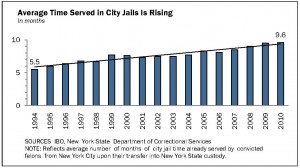Posted by Doug Turetsky, December 6, 2013
When New Yorkers look back on the administration of Mayor Michael Bloomberg, many are likely to think of the numerous public health initiatives. Indoor and outdoor bans on smoking. Calorie counts on menus. Eliminating transfats. And campaigns against salt and supersized sodas. So it may come as a surprise that during its last days in office the Bloomberg Administration plans to shut two clinics that provide immunizations to low-income New Yorkers.
There are currently three walk-in clinics run by the city that provide thousands of low-income patients with free or very low cost immunizations to prevent diseases such as mumps, rubella, and hepatitis B. The clinics in Tremont in the Bronx and Corona in Queens are set to close while the clinic in Ft. Greene, Brooklyn will remain open. In the first half of 2013 the three clinics served a total of 26,000 New Yorkers ages 4 and older.
To the city’s Department of Health and Mental Hygiene closing the clinics is a matter of dollars and sense. Closing the two clinics, which are each currently open two days a week for a total of 11 hours, will save $433,000 in city funds, according to the health department. There would be no layoffs connected with the closing, all staff would be reassigned; savings would come from leaving vacant positions unfilled and shedding the overhead costs for the two sites.
The city would also have to ante up more funds than in the past if the clinics were to stay open because of federal cutbacks in grants that help pay to purchase vaccines. The city’s health department expects federal funds to New York City for immunizations to fall from $5.4 million last fiscal year to $2.2 million this year.
Keeping the Tremont and Corona clinics open would entail taking on a level of city expenditure that doesn’t make sense to the health department since only about 1 percent of annual immunizations in the five boroughs take place at the clinics, according to the health department. The department notes that immunization rates have been climbing even though other clinics have been closed over the past decade. The health department reasons that by closing the two part-time clinics, the city can focus its resources on keeping the busiest of its three clinics open five days a week in Ft. Greene. Health department officials are assuming that only a portion of those that would lose access to immunizations in the Bronx or Queens will travel to Brooklyn.
This is the second time in recent months the Bloomberg Administration has sought to close the two clinics. Shortly after the City Council enacted the budget for the current fiscal year, which began on July 1, the health department announced it intended to shut the Tremont and Corona clinics, although it was not part of the budget plan. Public health and children’s advocates including the Commission on the Public’s Health System and Citizens Committee for Children protested the move, as did a number of elected officials and unions such as DC 37. The health department reversed the plan in August, at least temporarily.
While acknowledging the loss of federal funding, Anthony Feliciano, executive director of the public health commission, questions whether focusing resources on the Ft. Greene clinic makes sense from a public health perspective. Long commutes to Ft. Greene from the Bronx or Queens would undermine the walk-in nature of the clinics and discourage some individuals and families from getting needed immunizations.
Accessibility has apparently been a draw. Nearly 7,600 patients were seen in Corona during the first half of this year and about 6,000 in Tremont over the same period.
Although the health department contends there are 50 alternative clinics in the Bronx for free or low-cost vaccinations and 22 in Queens, Feliciano expresses concerns about language barriers and cultural sensitivity, especially for undocumented individuals. The Corona clinic sits in the community board with the highest share of foreign-born residents in the city.
Given Mayor Bloomberg’s emphasis on public health initiatives, closing the two clinics would make an odd coda to his last days in office.

